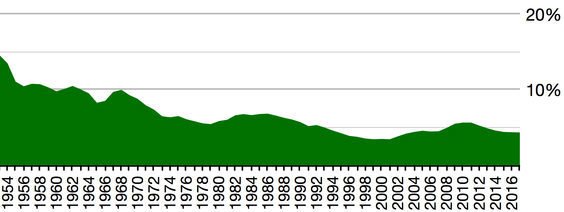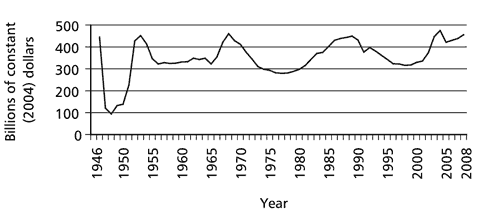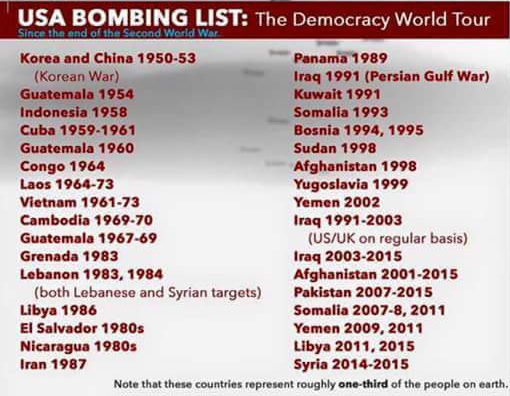Author: Pierre Lescaudron
Source: Sott.net

Most people reading this will have heard of the US Military Industrial Complex (MIC), a state within the state that wages wars everywhere, has bases all over the planet, plunders poor nations and seizes their resources for the personal profit of an elite few. But if this definition is accurate, we would expect to have seen a dramatic increase in the US federal spending on defense over the course of the last 70 or 80 years, when the modern American MIC has been active. Is that the case?
A Grain of Truth
Decades ago defense was indeed the largest part of the federal budget. In the 1950s it represented about 2/3 of federal spending, which was 15% of US GDP.
This is a high proportion and was in line with a capitalist country at the time where state spending was restricted to two core priorities: defense and infrastructure, while all other sectors of activity were left to private initiatives. But things have changed a lot since then:

As shown in the graph above, over the past 60 years, the defense budget has shrunk from 15% of the GDP to less than 5%. As a result, the defense budget (in constant dollars) has been stagnating since the 1950s:

This stagnation is all the more striking in that the federal budget has dramatically increased over the same period of time:

The graph above shows that the US federal budget jumped from $500 billion in the 1950s to almost $3.5 trillion in 2010. In 2017, following two Obama administrations, it reached $4.2 trillion. That's more than an 800% increase.
One factor that enabled this dramatic increase in federal spending was the increase in GDP, which can be partly attributed to profits from wars waged by the US in numerous countries over the past six decades:

Those conflicts and their aftermaths generated huge profits not only for weapons manufacturers, but all companies involved in 'rebuilding' the target country - which usually involves US tax dollars being funneled to US corporations - and the appropriation of the target nation's most profitable resources.
This process is clearly explained in Naomi Klein's 'The Shock Doctrine'. But what is not explained in Klein's book is that the companies that dramatically increase their profits thanks to war, end up expanding, recruiting more employees and remunerating contractors and suppliers, and that all those economic agents will, in turn, end up paying more taxes that fund the federal budget.
More here: US Wars Fund The Welfare State Which Finances The Liberal March Towards Totalitarianism